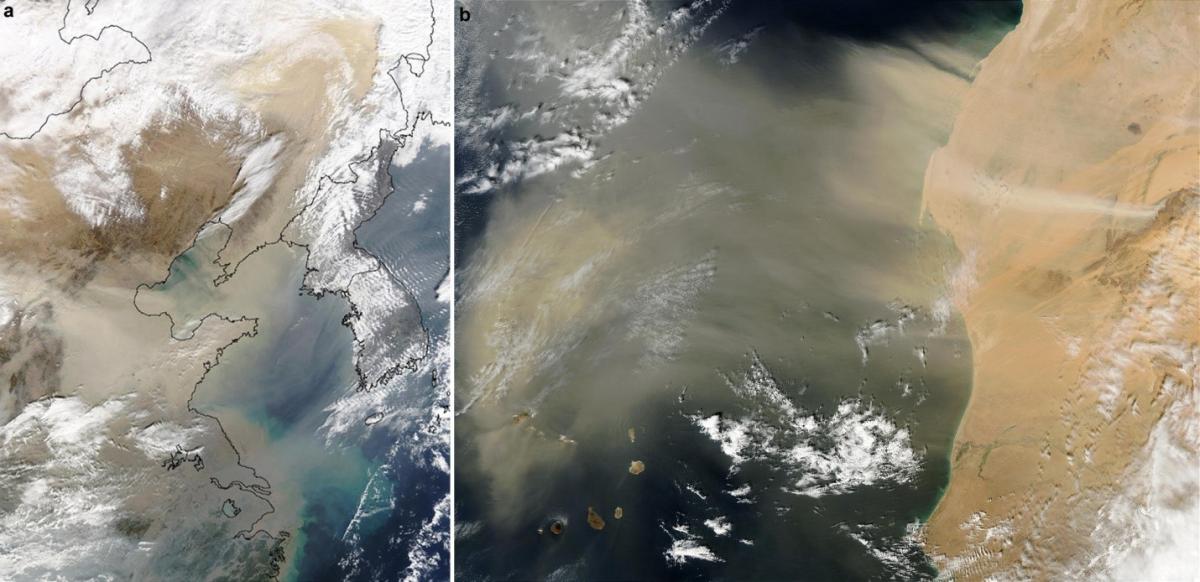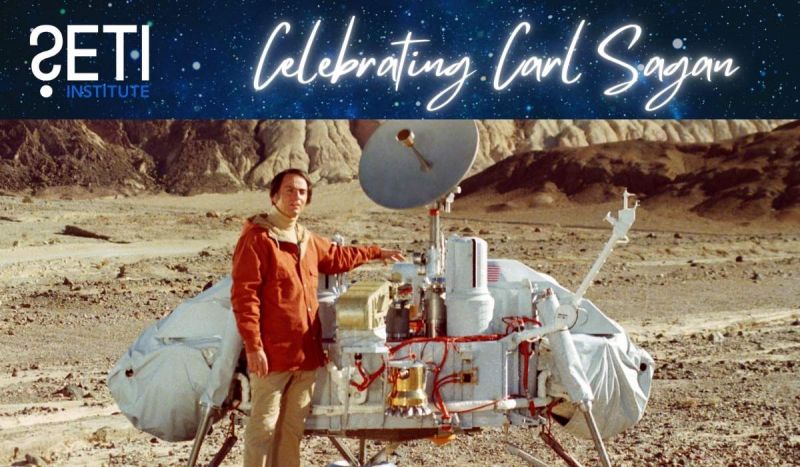
When was the last time you dusted your house? Did you hate it as much as I did?
As readers living in more arid climates already know, a significant fraction of the dust that accumulates in your home, and everywhere else on Earth, is composed of tiny grains of rock that were eroded from the surface and lofted into the air by the wind. Mars too is a dusty world. In fact, dust accumulations on solar panels have threatened the survival of some of the robotic spacecraft that operate on the planet’s surface.
By studying and comparing how dust is swept up and transported on Earth and Mars, we can gain insight into how best to study this material, and understand how it can affect our lives.
A more proper term for those tiny rock grains we think of as dust is “mineral aerosols.” Perhaps you’ve seen images of dust storms sweeping across a desert landscape, or a dust devil spiraling to the sky. These are ways that material from the ground is transported high into the atmosphere. Once there, it can be carried long distances, sometimes thousands of kilometers. Such dust is responsible for bringing nutrients from deserts to oceans, benefiting organisms that survive because of this long-range transport.
But dust is also a hazard, both directly because of its impact on human health and also indirectly thanks to its effect on Earth’s climate.
Mars is the only other world in the Solar System known to experience dust storms and dust devils, which lift significant amounts of dust even in its rarefied atmosphere (about 1 percent as dense as Earth’s). In fact, dust is the most significant phenomenon affecting the Mars’ climate system. Vast dust storms routinely sweep across broad regions of the Red Planet, and dust devils pepper most places on a daily basis. Understanding the processes that vacuum up and transport mineral dust on Mars could provide some insight into the same processes occurring on Earth.
A great deal of what is known about atmospheric dust comes from orbital observations. This is particularly true for Mars, where there are few instruments on the ground that can sample the air. Dust storms on Earth were first identified from orbit in weather satellites in the 1960s. It’s thought that 1 – 4 billion tons of mineral dust are lofted into the air each year, more than twice that of anthropogenic annual emissions and rivaled only by sea spray in mass. On Mars, shifting features originally called “yellow clouds” when seen by 19th century astronomers were confirmed to be made of mineral dust when the first Mars-orbiting spacecraft, Mariner 9, reached the planet in 1971. That occurred in the midst of one of the most intense, planet-wide dust storms on record, and in fact scientists had to wait a month or two for the storm to die down before the orbiter’s camera could take decent images of the surface.

Figure 1. Visible satellite images of dust plumes over a) the Yellow Sea and b) downwind of North Africa. Adapted from Marticorena and Formenti (2013).
Estimates of martian dust emissions are not well constrained, with mean values ranging from 0.4 – 1.3 billion tons in an Earth year. Every few years (such as in 1971), Mars produces a global-scale dust event that obscures most, and sometimes all, of the surface. When this happens, the dust emission is thought to range from 0.6 – 2 billion tons. Given that the continental surface area of Earth is close to the global surface area of Mars, these results suggest that the mean dust lifting rate per unit area is a little bit larger on Earth than on Mars (although, of course, the rate varies considerably with both location and season on both planets). Although the mean rates of dust entrainment may be similar on both worlds (within a factor of approximately two), Mars is a smaller planet, and unlike Earth it cannot cleanse its atmosphere of dust through precipitation. This relative “dustiness” is reflected in the observed annual global mean dust optical depth – which is to say, obscuration – which is ~10-20 times that measured on Earth.
Dust devils are dust-laden vortices of air that commonly form in areas, like deserts, where surface heating causes vigorous convective activity in the hottest part of the day. Martian dust devils with diameters of ~200 m and heights of ~2 km were first found in Viking Orbiter images in the 1980s. Subsequent studies produced inventories of thousands of occurrences. Although the image record for Earth is just as long, and generally of higher resolution and with better data coverage, it was not until this year that the first Earth dust devil was identified with spacecraft images. It is not yet known if terrestrial dust devils are more difficult to spot simply because they are smaller than those on Mars, or whether the terrestrial image data sets have remained largely untapped simply because nobody thought to look.
This lack of reporting is not caused by negligence: a recent study indicates that on Earth, dust devils only contribute a small percentage of the total dust swept from the surface by winds. In contrast, research suggests that dust devils are far more important on Mars, contributing between 25% and 75% of the total observed dust loading in the atmosphere.
The difference in the relative input of dust by dust devils in the climatology of Earth and Mars is clearly reflected in the techniques that have been developed to study them. Given this first report on Earth, it’s likely that many more terrestrial detections will be announced in the coming years. It seems that the techniques used to study dust on Mars could be inspiring similar approaches on Earth. After all, this is the whole point of doing planetary science: studying other worlds with their vastly different and sometimes hauntingly similar environments can cause us to look at our own Earth with new, perhaps wiser eyes.

Figure 2. A dust devil imaged in Eloy, Arizona, in June 2005. Image Credit: NASA (Original image)
The picture is from the webpage: http://www.nasa.gov/vision/universe/solarsystem/2005_dust_devil.html
 Lori Fenton
Lori Fenton
Senior Research Scientist
Degree/Major: Planetary Science
Major Awards: 2005 NASA Fellowship for Early Career Researchers
Planetary scientist Dr. Lori Fenton joined the SETI Institute as a principal investigator in 2006, and was awarded NASA's Carl Sagan Fellowship for Early Career Researchers that same year. Lori's primary research interests include aeolian geomorphology (how wind shapes a planetary surface) on Venus, Earth, Mars, and Titan; recent and ongoing climate changes; and the mobility of wind-blown sand and dust. Her research makes use of many different types of information, including fieldwork on Earth, visible and thermal imagery from spacecraft, and wind predictions from atmospheric models such as the NASA Ames Mars Global Climate Model (Ames MGCM) and the Mars Regional Atmospheric Modeling System (MRAMS). More Info.





